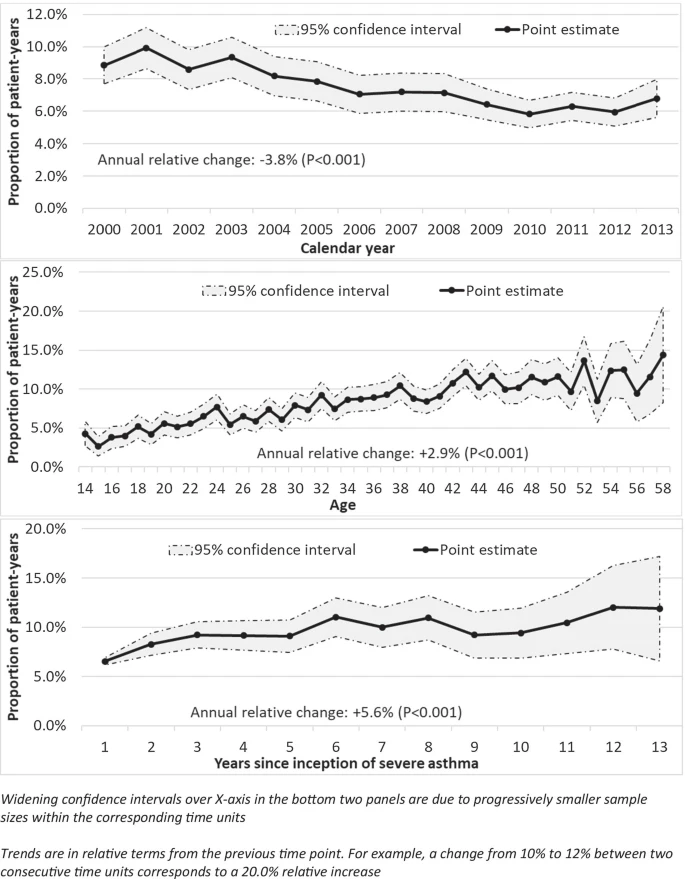Research – Open Access
Mohsen Sadatsafavi, Amir Khakban, Hamid Tavakoli, Solmaz Ehteshami-Afshar, Larry D. Lynd & J. Mark FitzGerald
Respiratory Research volume 22, Article number: 103 (2021)
Abstract
Background
Oral corticosteroids are important components of pharmacotherapy in severe asthma. Our objective was to describe the extent, trends, and factors associated with exposure to oral corticosteroids (OCS) in a severe asthma cohort.
Methods
We used administrative health databases of British Columbia, Canada (2000–2014) and validated algorithms to retrospectively create a cohort of severe asthma patients. Exposure to OCS within each year of follow-up was measured in two ways: maintenance use as receiving on average ≥ 2.5 mg/day (prednisone-equivalent) OCS, and episodic use as the number of distinct episodes of OCS exposure for up to 14 days. Trends and factors associated with exposure on three time axes (calendar year, age, and time since diagnosis) were evaluated using Poisson regression.
Results

21,144 patients (55.4% female; mean entry age 28.7) contributed 40,803 follow-up years, in 8.2% of which OCS was used as maintenance therapy. Maintenance OCS use declined by 3.8%/calendar year (p < 0.001). The average number of episodes of OCS use was 0.89/year, which increased by 1.1%/calendar year (p < 0.001). Trends remained significant for both exposure types in adjusted analyses. Both maintenance and episodic use increased by age and time since diagnosis.
Conclusions
This population-based study documented a secular downward trend in maintenance OCS use in a period before widespread use of biologics. This might have been responsible for a higher rate of exacerbations that required episodic OCS therapy. Such trends in OCS use might be due to changes in the epidemiology of severe asthma, or changes in patient and provider preferences over time.
